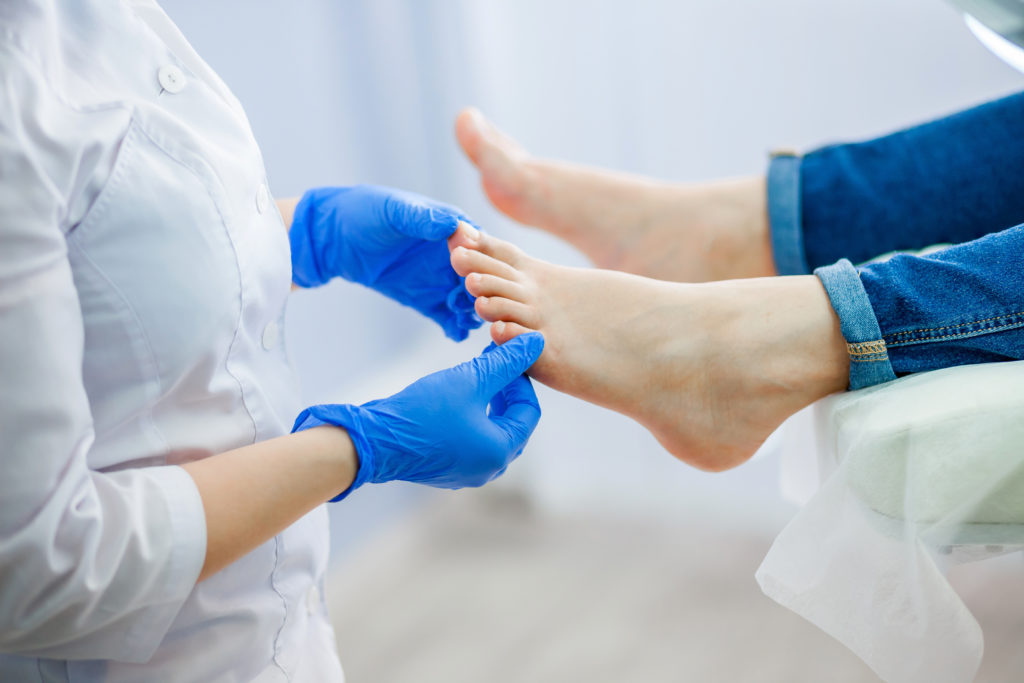What is foot fungus?
Mostly known as athlete’s foot, fungus of the feet and toenails is a bacterial infection that causes the skin of the heels and toenails to peel, harden and turn a yellowish color. The first signs of foot fungus usually appear between the toes. Though symptoms can be painful, most people just experience itchiness and slight to moderate discomfort. At worst, foot fungus causes mild irritation and pain and some possible hesitancy to wear sandals in public. But, for those with more serious medical conditions, the broken skin caused by fungus can eventually cause more invasive problems like foot ulcers and cellulitis.
Causes
The foot fungus organism is typically contracted through direct contact with an infected area. Walking barefoot in public restrooms, showers, or locker rooms puts you at risk for contracting the fungus- but you can get it anywhere – even at home. People with weakened immune systems, or those with diabetes in particular, have a higher chance of the fungus spreading to other parts of their body like the hands or groin area. At first, many think they have eczema or a similar skin condition that causes itchy and flaky skin, but foot fungus differentiates itself as it causes the toes and heels to crack and usually turn yellowish.
Prevention
Practicing clean hygiene is the easiest way to prevent foot and toenail fungus. Avoid walking barefoot in communal areas, especially if other people have walked barefoot in those same areas, and always have a pair of sandals or flip flops on hand for protection. Also, be mindful of who you share your socks and shoes with. If you tend to be the kind of person who contracts fungus easily, another suggestion is to use foot powders or try to keep your feet dry when wearing shoes. Moisture build-up can cause fungal organisms to thrive in a warm, humid environment.
Treatments
Since most fungal infections of the foot won’t go away on their own, most people need at least an over the counter topical antifungal ointment. Others may have to resort to seeing a dermatologist if symptoms persist or get worse over time. The doctor may then suggest treating the fungus with an oral antifungal antibiotic, or a stronger, prescription-strength topical cream if the person is not able to take the antibiotic for health-related reasons. Some skin specialists have even been treating fungus with lasers, but much more research needs to be done on whether or not that is an effective treatment.
As always, if your feet are hurting for any reason, make sure to call our Evanston office – Evanston Podiatric Surgeons at 847-475-9030, or Downtown Chicago office – Mag Mile Foot and Ankle Institute at 312-236-3507. Our care options for foot injuries and pain include some of the most cutting-edge procedures and technologies available!

